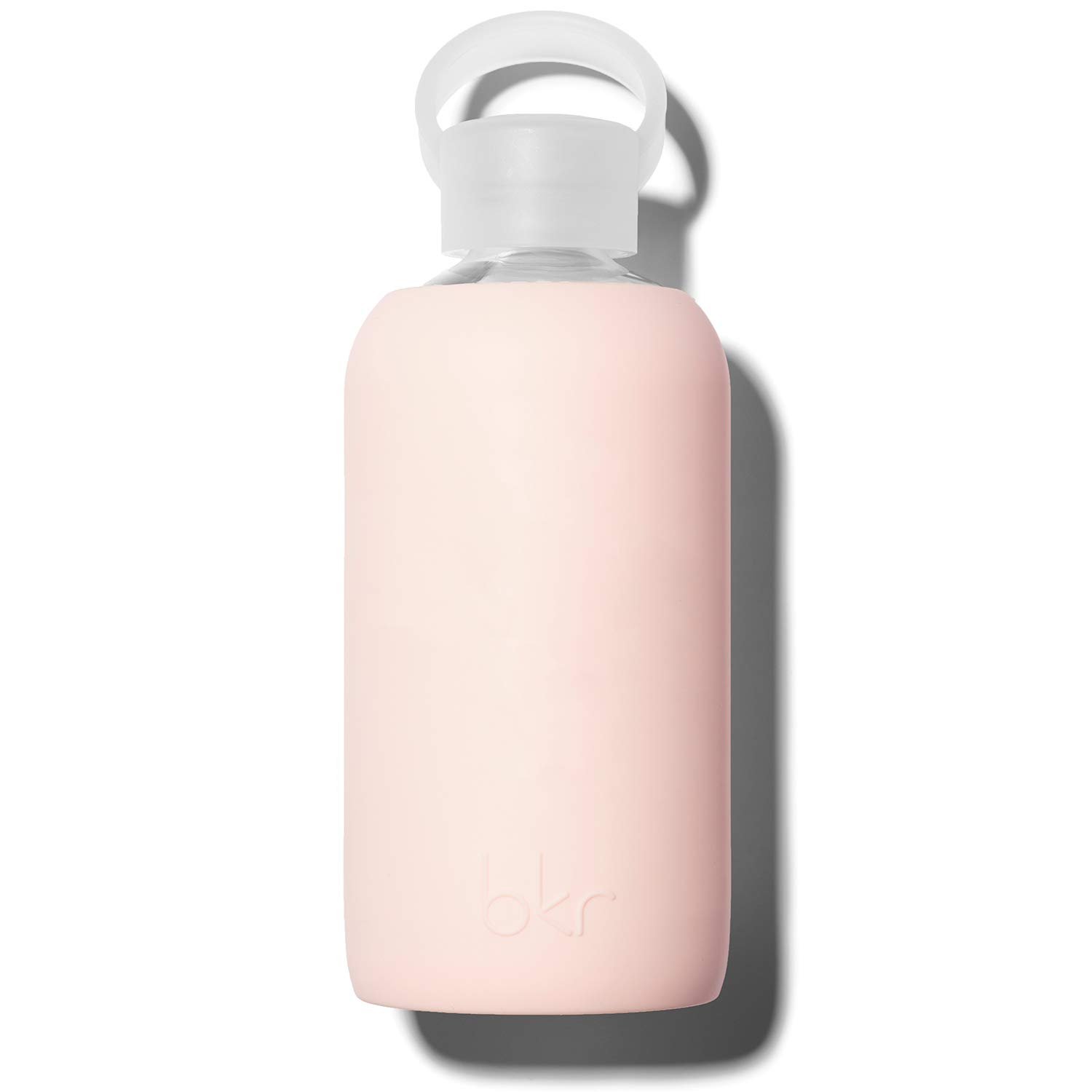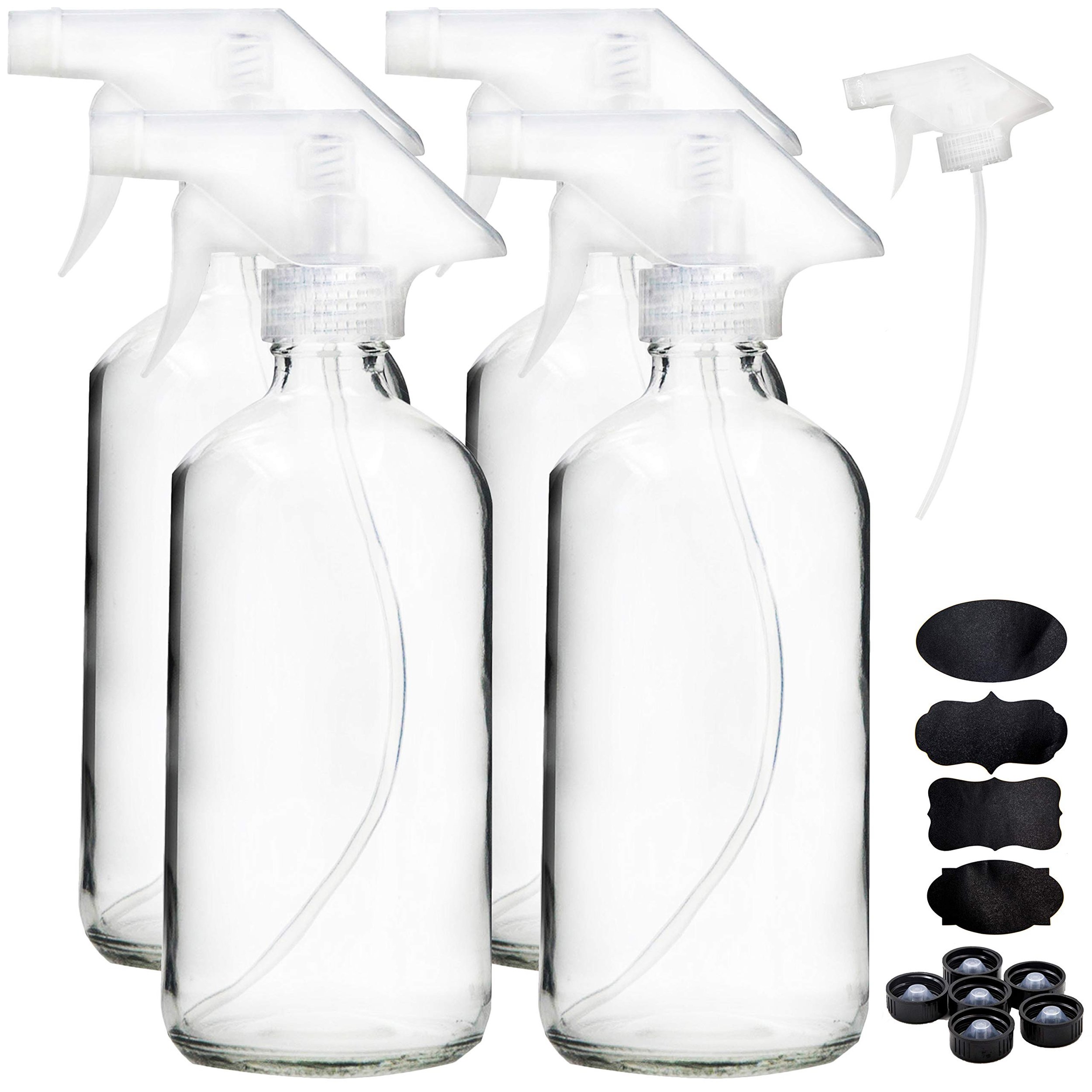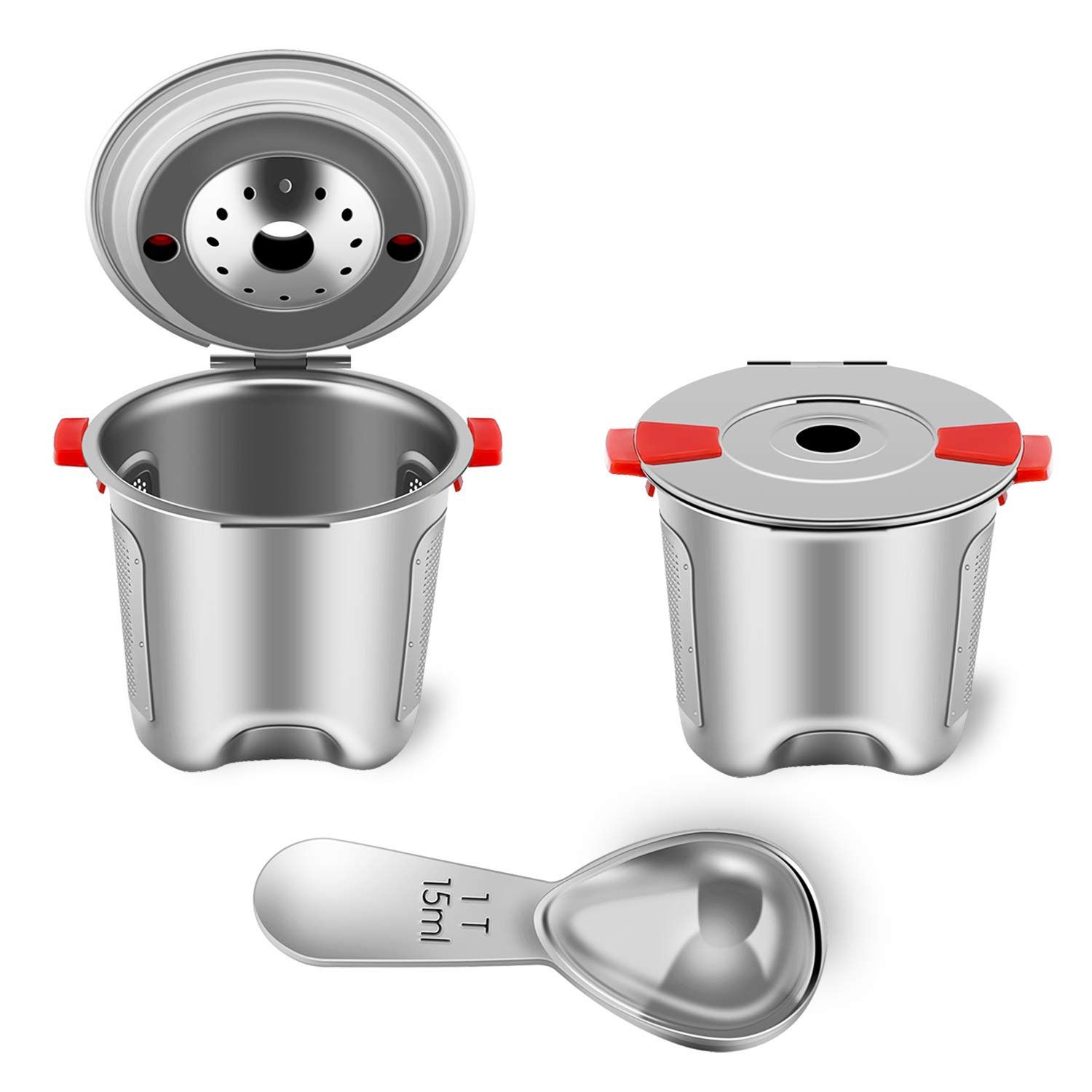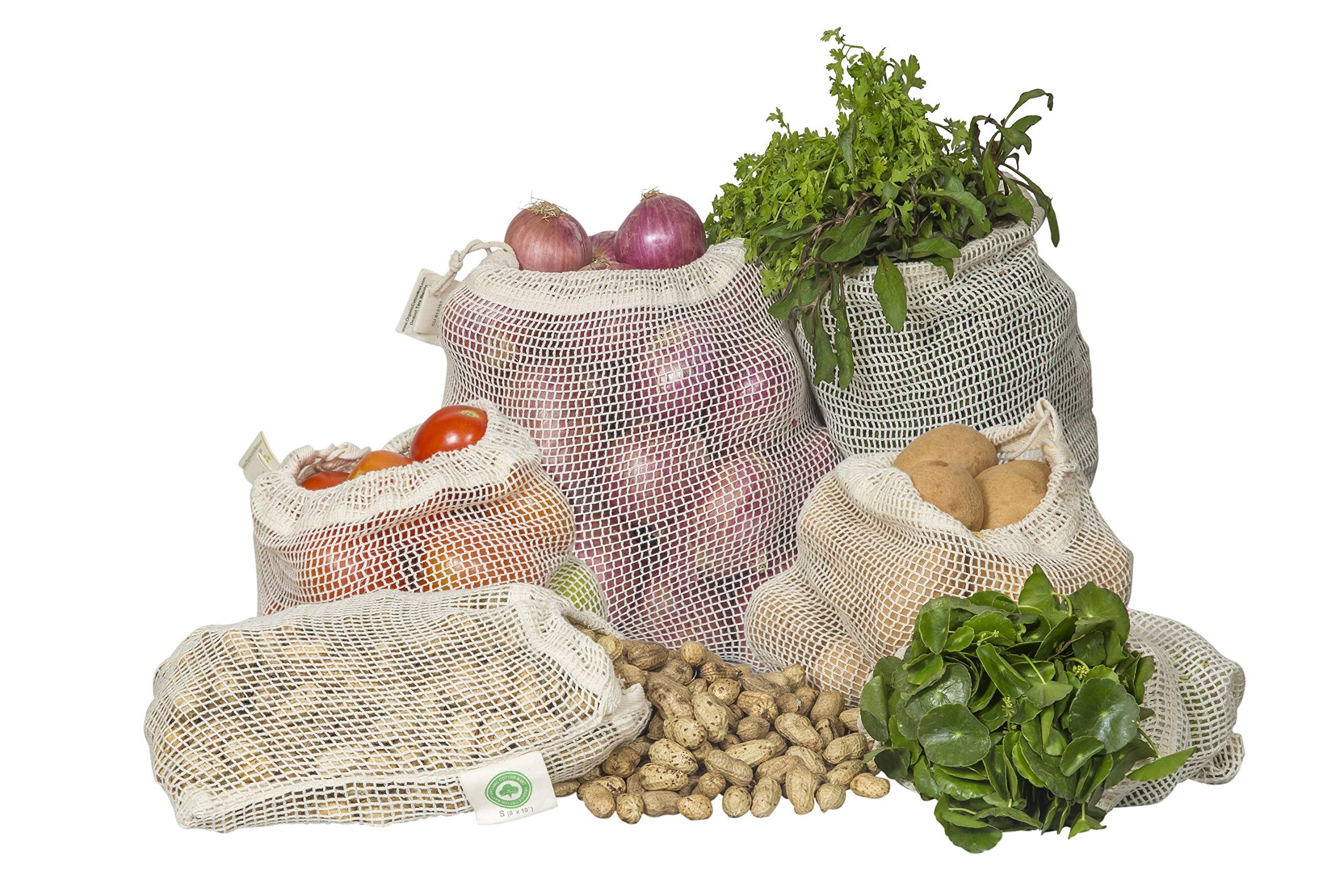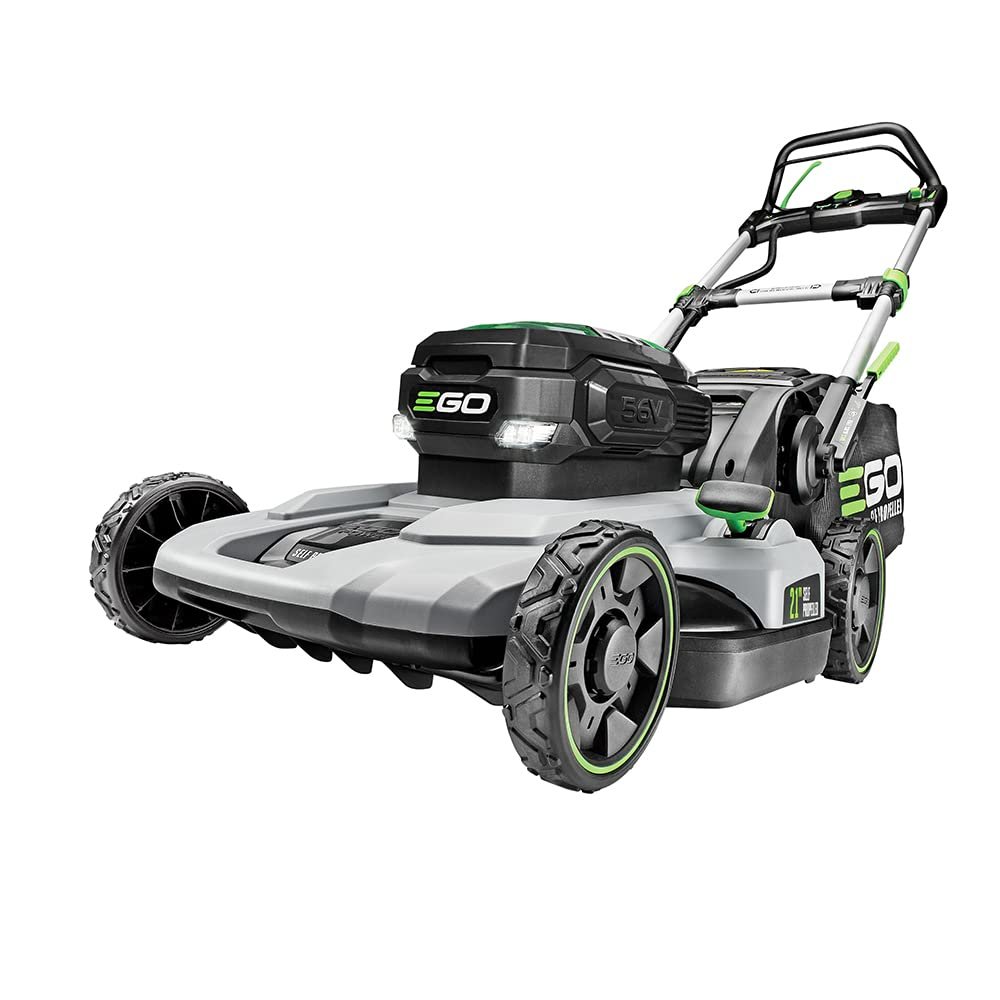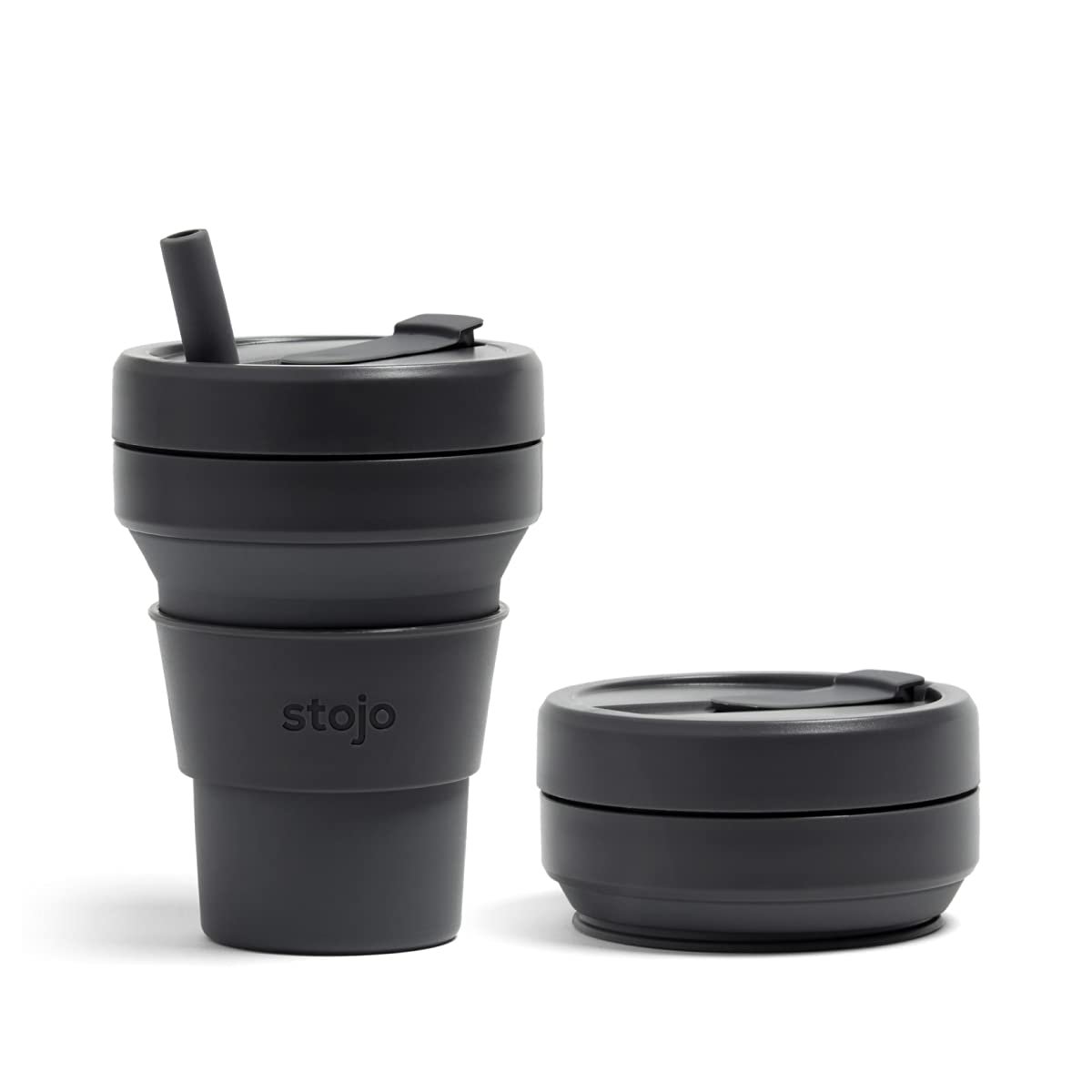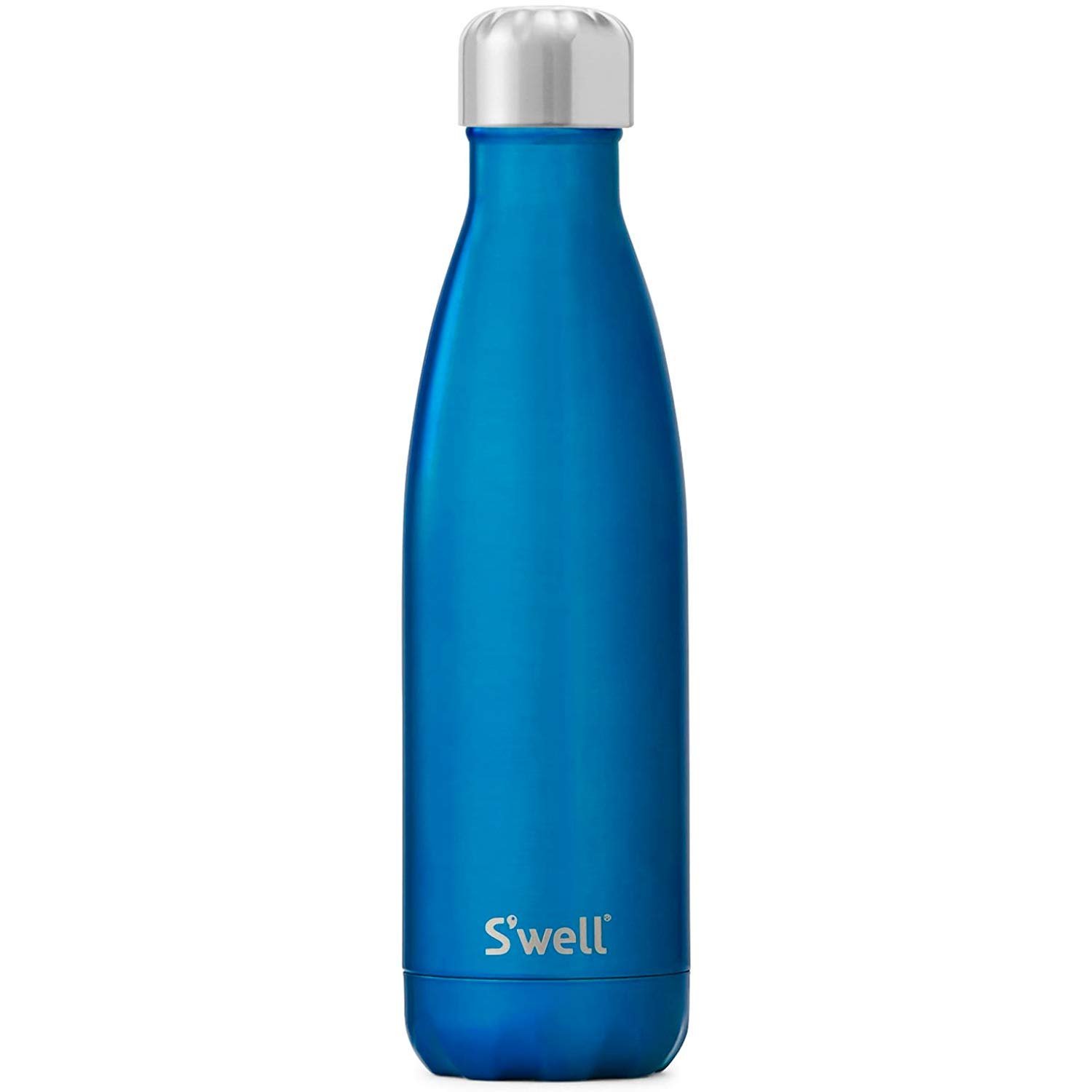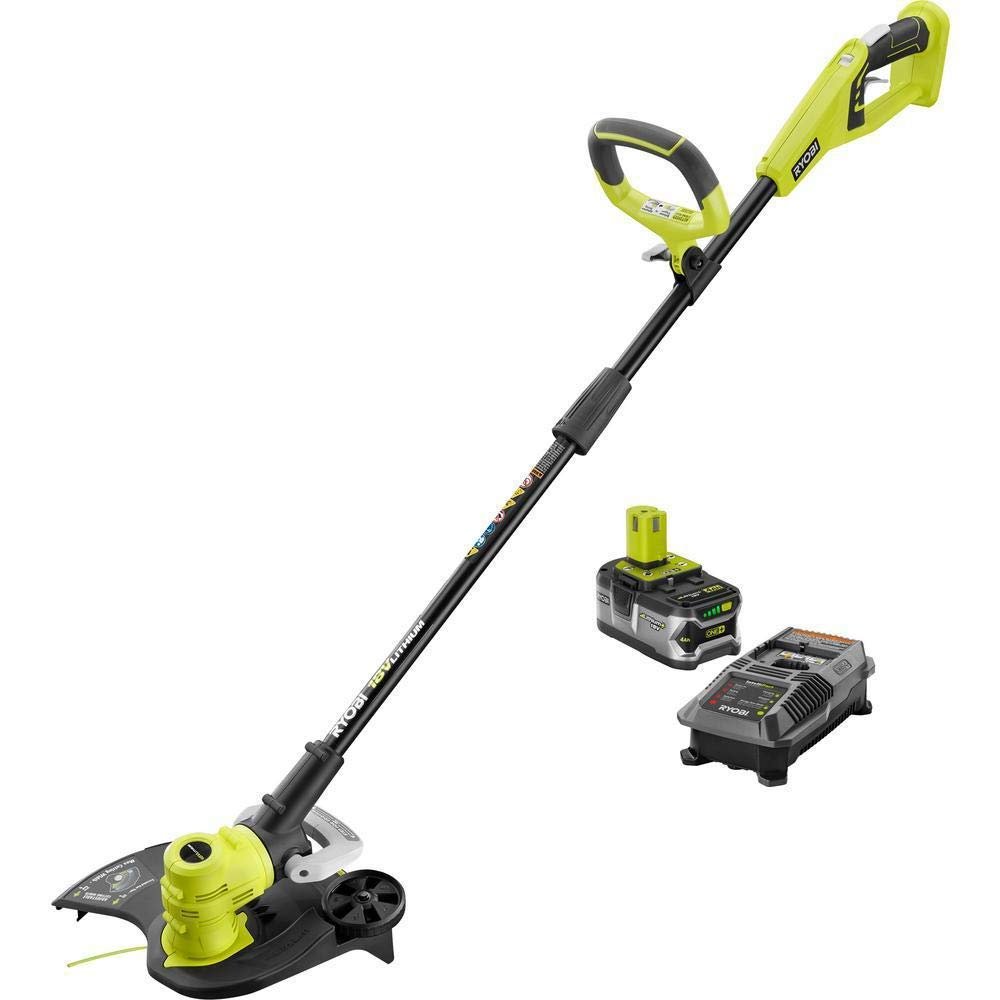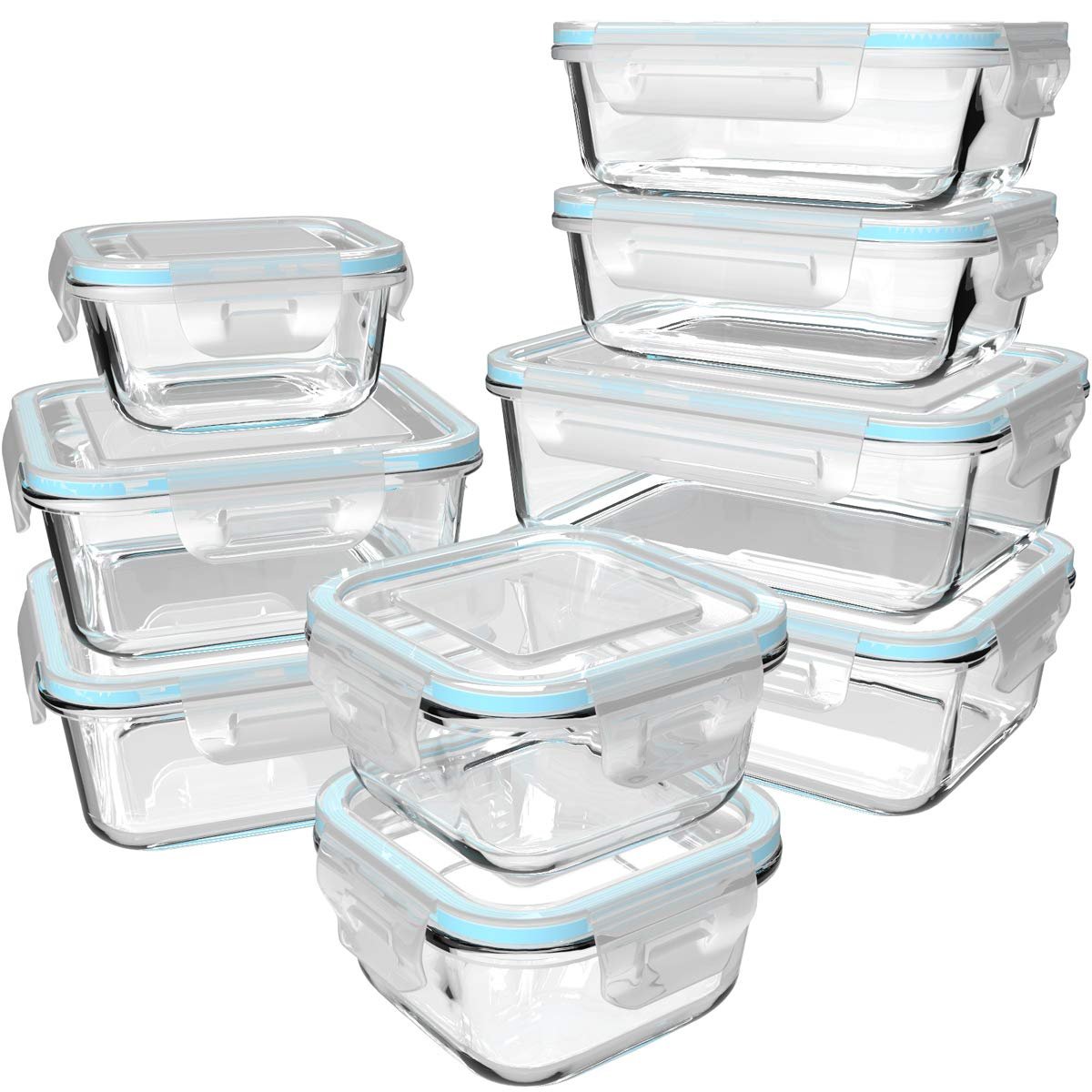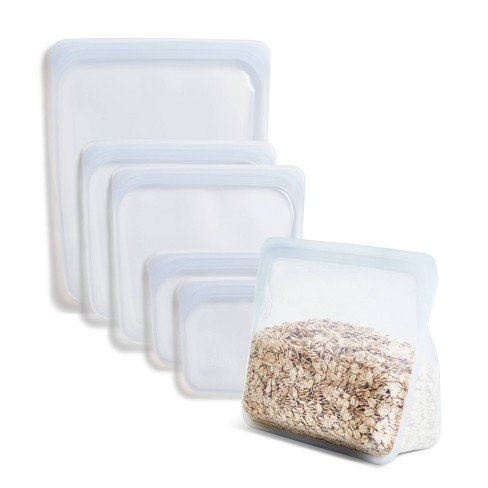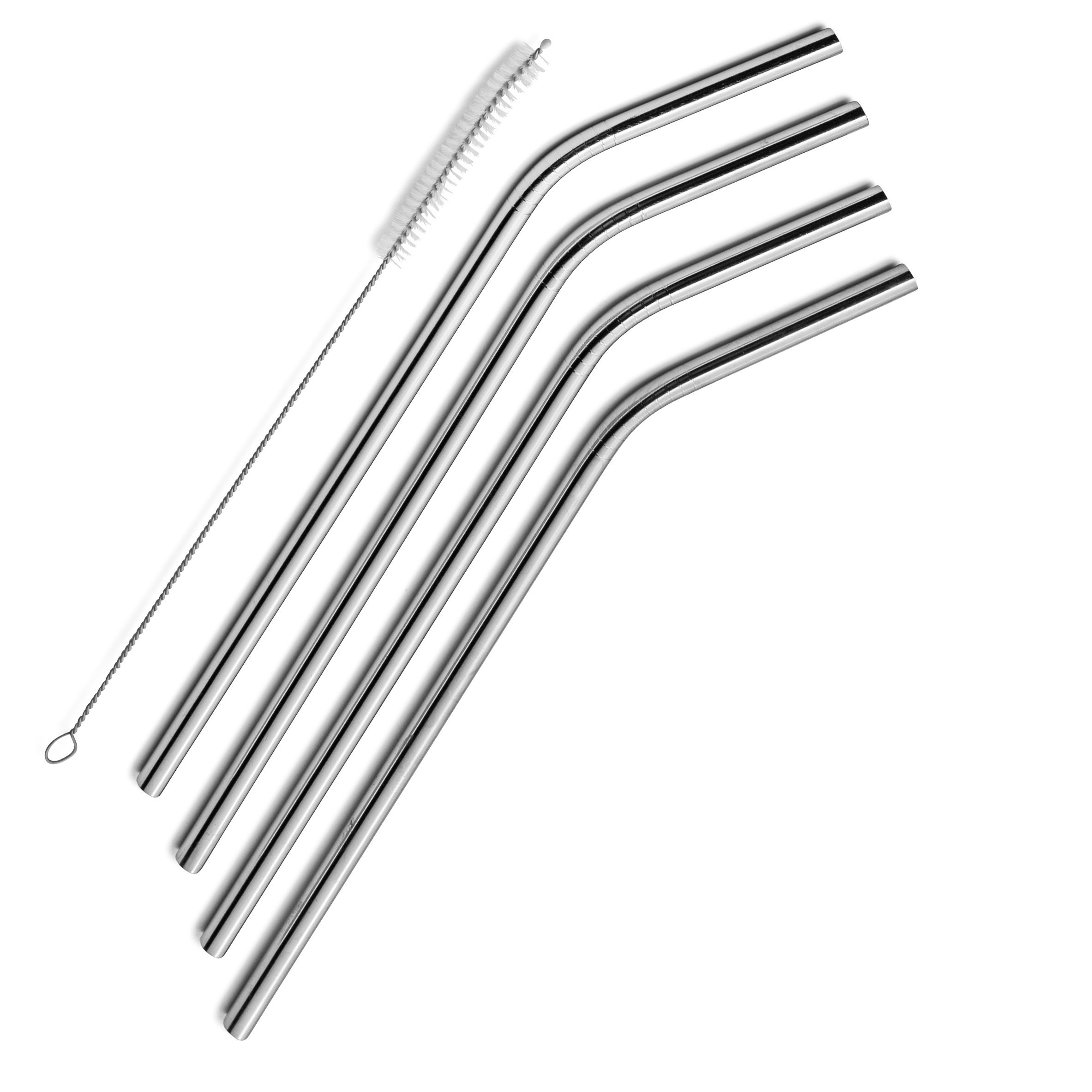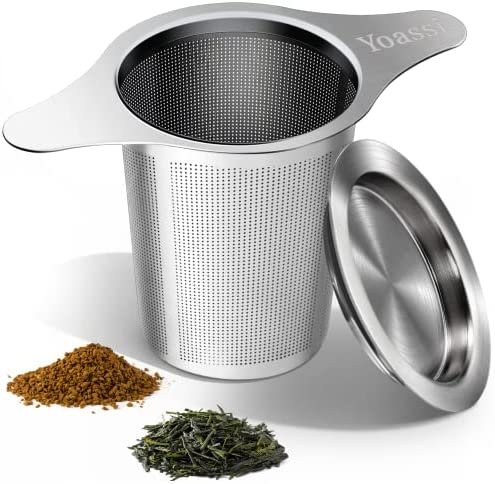How to Start Your Sustainability Journey
Where to start…it’s a good question. And depending on who you ask, you’ll most likely get a different answer. I’m not sure if how we started was the right way, but it’s worked for us so far.
Sort of like my nutrition advice, we started small and built on it as we went. I look at some of the sustainable things we do now, and they are on a much bigger scale (three big raised beds + other planting areas with fruit trees, solar panels, hybrid car), but that doesn’t diminish what we did in the beginning. In fact, those small first steps are what led us to what we’re doing now. It honestly seems silly to jump right into solar without also using reusable food bags; sort of like putting the cart before the horse? Not to say jumping to solar is bad, that’s a great sustainable step, but the smaller things matter, too.
To give credit where credit is due, my Dad is the person who taught me about recycling and sustainability, which we didn’t really call it that back then, but that’s exactly what it was. I can remember as a kid watching The Lorax to learn about pollution, and laughing with him and my Grandfather about all the old nails they used to save and reuse. My maternal grandparents weren’t much different; they saved, fixed up and reused everything. I can remember always having that blue recycling box in the garage that old newspapers and milk jugs would go in.
Anyway, I digress. My point is, I’ve been around “reduce, reuse, recycle” for a while. And though it was far from perfect, it gave me a solid foundation from which to grow. We still aren’t perfect now, but we’re constantly researching, learning, tweaking and implementing new ways to be better.
Seven Easy Ways to Become More Sustainable
If you want to read my ramblings about how our sustainability journey has gone, keep reading, if you just want some tips, here we go:
Start small. Don’t try to turn everything in your house into something sustainable right away. That’s not only costly, but actually goes against the whole point of being sustainable if you’re throwing away a bunch of stuff that’s actually working or in otherwise good condition. If you can, wait until whatever non-sustainable “thing” you have is broken or beyond repair, and then replace it with a sustainable option. Or, if you really want to replace something, try Facebook Marketplace, Goodwill or passing it along to a friend. Reusing, if you can, is almost always better than just trashing.
Evaluate what you have and prioritize. For me at the beginning, I had no say over what I could do to the structure I was living in because it was a condo. So I changed what I could inside. I swapped out plastic food containers for glass, I switched over to non (or at least less) toxic cleaning products, when I could I opted for glass or tin cans for pantry items and tried to avoid those in plastic bottles, I bought nuts from the bulk aisle (and brought my own reusable, cotton bags), I bought reusable produce bags for the grocery store, I snagged free reusable shopping bags wherever I could and bought others to supplement, I went to my local farmers’ market twice a week. These things may not seem like much, but they add up and they became a foundation on which to keep going.
Research your town’s recycling options. Our city has a no-sort recycling program that picks up on trash day, however there are still certain things we can’t put in our recycling bin, like plastic bags or larger pieces of metal. But, we have a big recycling center for large items, metal scraps, etc., so we called, got an access card, which is free for residents, and now we take advantage of both options. My son actually gets very excited about going to the recycling center with Dada. My parent’s small town will pick up cardboard & paper, but they need to bring the rest to a recycling center. Unfortunately in 2022 we have not figured out a consistent, easy way for people to recycle. It’s frankly shameful, but it’s where we are, so, kind of like infants & toddlers, we meet America where she’s at, and do some of the heavier lifting to figure out what’s available. I would encourage you to do a little work, too, and figure out what your town does. Either call the town directly, usually it’s under Public Works, or try this website. Also, research what you can and can’t recycle. Unfortunately, if a single plastic bag ends up in the wrong place, the whole batch of recycling goes to a landfill. However, a lot of grocery stores, like Whole Foods and Shaw’s, have receptacles that will take plastic bags, and some will even take those pesky produce bags.
This a big a one, and I’m sorry if I get soap-boxy, but I get heated talking about this. Reduce food waste and then compost. Really, the real moral of this story is to just. not. waste. food. Buy and cook what you need, freeze leftovers to save for a busy day, find ways to use up produce that is starting to shrivel. According to Feeding America, 108 billion pounds of food is wasted each year in the US alone. How do we even wrap our minds around that?? Do you know what a billion pounds of something looks like, because I sure don’t. That equals 130 billion meals and $408 billion dollars worth of food. BILLION!! This isn’t like a few meals, folks. It’s staggering and sickening. We need to do better. Food that is thrown in the trash is actually a major contributor to our climate crisis, not to mention the number of children and Americans who go hungry every single day. You may think that because food is organic matter it would just decompose in the landfill, but what actually happens is that it decomposes and off-gasses methane. When you compost your food scraps, you are still off-gassing methane but at a much smaller amount, because you’re simultaneously off-gassing carbon dioxide. Methane is 28-36 times more powerful than carbon dioxide and incredibly detrimental to our environment. So while neither gas is great, carbon dioxide is leaps and bounds less harmful than methane (methane is also off-gassed from your “natural gas” stove, and all those chemicals make their way into your bedroom while you sleep. Let that sink in for a minute…). Plus, with composting, you’re putting the nutrients from the decomposed food back into the land, and if you’re a gardener, you’ve likely noticed how much better your crops (and even grass) grow in compost versus just dirt. Like with recycling though, composting requires a little research. Some towns have a composting program, or at least composting sites that you could bring your own compost and drop it off, or you can do it all yourself. It’s really important to research what can and can’t be composted; peels, seeds/pits, animal parts (bones, etc.) are all good, and there are some companies with parchment paper, freezer bags and even some tea bags that are compostable, too. Always double check before tossing it in.
Get creative. Being sustainable or green doesn’t need to be fancy. Look around your house and see where there might be some easy swaps, or something that could easily be repurposed. One thing we do, which costs us nothing, is to use water from our dehumidifier to water some of our plants. We’re emptying the dehumidifier anyways, so instead of just dumping it down the drain it gets dumped in our plants.
Plant trees that are native to your area. Again, this takes a small amount of research, but find plants that are not invasive, and plant them in the ground. Trees naturally pull carbon dioxide, a greenhouse gas, out of the atmosphere to build their trunks, roots, branches and leaves, and then excrete the oxygen we breathe. Talk about the heavy lifters, they literally clean the air we breathe. Shrubs and other plants are beneficial, too, but trees are the real powerhouses.
Invest in bigger ticket items if you can. And if you can’t, research them now so you’re prepared for when you do need them. Furnaces, hot water heaters, cars…they don’t last forever, and most of the time you don’t have a great deal of warning before they go kaput. Oil companies, natural gas companies, car manufacturers, they are all really good at marketing their products as “clean” or “natural.” Did you know “natural” gas off-gases more methane than propane? While your electricity bill will go up with heat pumps, you should offset the cost by not using nearly as much fuel. We live in Maine, so I would argue our winters can be pretty cold and long. However, we made it through our first heat pump winter without turning our furnace on once. And with our solar panels, we paid very little in electricity for the entire year. Try not to wait until you’re in a bind to make a big purchase like this, when you’ll feel the most pressure to buy something quickly. Do your research, ask questions and go into it informed so you can make the best decision for you and your family. As far as the cost of these bigger ticket items (I’m talking heat pumps, solar panels, solar hot water heaters, electric cars), it all varies. While the initial investment is just that, an investment, the long-term savings FAR outweighs it. Like thousands of dollars outweighs it. I’m going to write a longer post about how we’ve made our house greener because it’s too much for this post, but it was surprisingly easy, and really not that cost-inhibitive once you break it down and apply for those tax credits and rebates. But again, you need to do your own research. Ask questions. Talk to your accountant. Don’t rely on what I say or what your friend says, use it as a jumping off point to find out for yourself what will work or not. I don’t know your budget, your house’s alignment with the sun or your long-term financial goals or situation. My husband did a lot of the legwork, he asked a lot of people a lot of questions, and then we consulted with the pros in order to get the best bang for our buck. We went into it informed, and it has paid off (no pun intended…).
Easy Sustainable Swaps
Looking for ways to make some sustainable swaps around your house? No matter your budget or where you’re at on this journey, there’s always something to choose from:
You can see more of our favorite sustainable & non-toxic items here.
We definitely didn’t swap over to all of these items all at once. Where we are today has taken over 10 years of trial & error, collecting, swapping, learning and research. Some items we think are going to be great are a total bust. But you know what? So are non-sustainable items, yet somehow we keep going back for more of those. I think sometimes, as humans, we have a very hard time going out of our comfort zone and actually giving new things a try. Why? I don’t know. Fear of failure? Fear of disappointment? Maybe instead of doubting anything and everything new, we should look at with curiosity and excitement! My point is, don’t be afraid to branch out, do your own research and try things. Most of the time, we actually much prefer the sustainable option in terms of functionality and capability. Plus, most sustainable options are also non-toxic, so not only are they easier on the planet, they’re safer for us and our kids, too.
The Cost of Going Green
I’d be remiss to talk about sustainability without also addressing the cost of it. I am fully aware that most sustainable options cost more than their generic counterparts. However, a) this isn’t always the case, so again, research!! If you’d search out the best deal for plastic Tupperware then search out the best deal for a glass set; and b) sustainable items are supposed to be just that, sustainable. So you may pay more upfront, but chances are it will last longer than the cheaper version anyway.
I plan to co-write a post with my husband about our solar panels & heat pumps and the process of installing them, so stayed tuned because we’ll definitely address cost in it, and you may be surprised at how it’s worked out, I know I was!
Where to Purchase Sustainable Items
These are some of the stores I visit to check out and purchase sustainable options:
The Rest of the Story
If you’re at all interested in how our journey has evolved, here’s the rest of the story…
Rewind to 12 or 13 years ago, I was working part-time and back in school full-time. The only meal I sometimes had at home was breakfast, the rest of the day, my meals and snacks were packed in a lunchbox. I don’t remember exactly what I packed, but I know most of my dinners needed to be reheated, because that’s when a lightbulb went off. I cringe to even admit this, but my reusable containers were those plastic takeout containers, you know the ones, black plastic with the clear plastic top? That’s actually not the cringeworthy part…the cringeworthy part is that I used to put that whole container in the microwave!! I knowwwwwww…I can’t stand even thinking about it. I don’t know what made the lightbulb go off this particular day, but I remember quite clearly - it was an evening, 2D design class and we were having our dinner break. As I was waiting for my spaghetti to ding, I suddenly though, wait, wtf?! That weekend I was with my mom and she got me four pieces of glass food containers, which I actually still have today. I guess at the time I thought I was being responsible, reusing those plastic containers instead of just tossing them. But that’s what I ended up doing…I went home and disposed of them. For my birthday that year, I asked for a full Rubbermaid set of BPA-free food storage containers. I’d store & freeze food in those, but transfer what I was reheating to glass (I actually still have those as well!). Over the years I’ve built on my glass storage container, adding new ones and either reusing (they’re great in the garage or basement for nails, spare parts, etc) or recycling the plastic ones. For a while I would even save glass jars that, once emptied, I’d run through the dishwasher and use for storing soups or smoothies.
From there I really started gravitating towards reusable shopping bags, and eventually came across reusable, mesh produce bags. Still to this day, cashiers almost always comment on the produce bags, asking where I got them and how great they are. I also stopped buying and using plastic water bottles. I will in a real pinch, but I bought a couple reusable bottles and that’s what I use now, especially when we travel. Also around this time, a company called Garbage to Garden started up in Portland which is a compost service. I’d always been curious about composting, but never felt like it was something I could do on my own. Being in a condo was a little tricky, though looking back on it, I could’ve made it work. However, as soon as we moved into our house we signed up. They provide the bucket and pick up on trash day for only about $100/year. Again, knowing what I know now (things evolve, and it’s okay to evolve with them!), we could easily compost on our own; however, Garbage to Garden is by all accounts a great company, affordable and super convenient (we also get free bags of compost throughout the year which we put to good use).
Those few things, and I’m sure some others that I’m forgetting, are what happened over the course of 10-12 years. It’s nothing major and certainly nothing groundbreaking. But change takes time. Getting into the mode of researching things and knowing before you buy, takes time. But now, whenever we’re in the market for something new, we search out the sustainable option first. We do it with our kids’ toys & clothes, we do it with our nearby farmers so we know we’re choosing organic, regenerative farms, we do it with our cars. It has become second nature for us. Do we have more improvements to make? Absolutely. Do we continue to learn more each year? Yup. Do we do things exactly the way we did when we first started living more responsibly? Maybe some things, but probably not much. Evolution is good! Change is good! Learning is good!
I know not everyone gets as excited about this stuff as my husband and I do, but we love figuring out how we can keep doing better. We ask questions, we do research, we want to play our part in the sustainability of our planet, so our children and their children and their children can continue to call this place home. Because truthfully? This planet won’t, and can’t, handle too many more generations if we don’t all start making small steps to help Her out.


